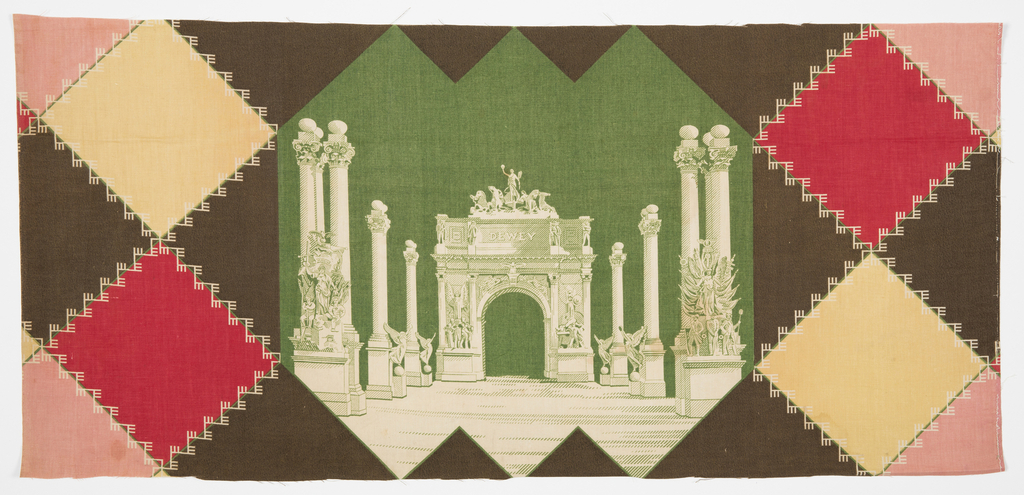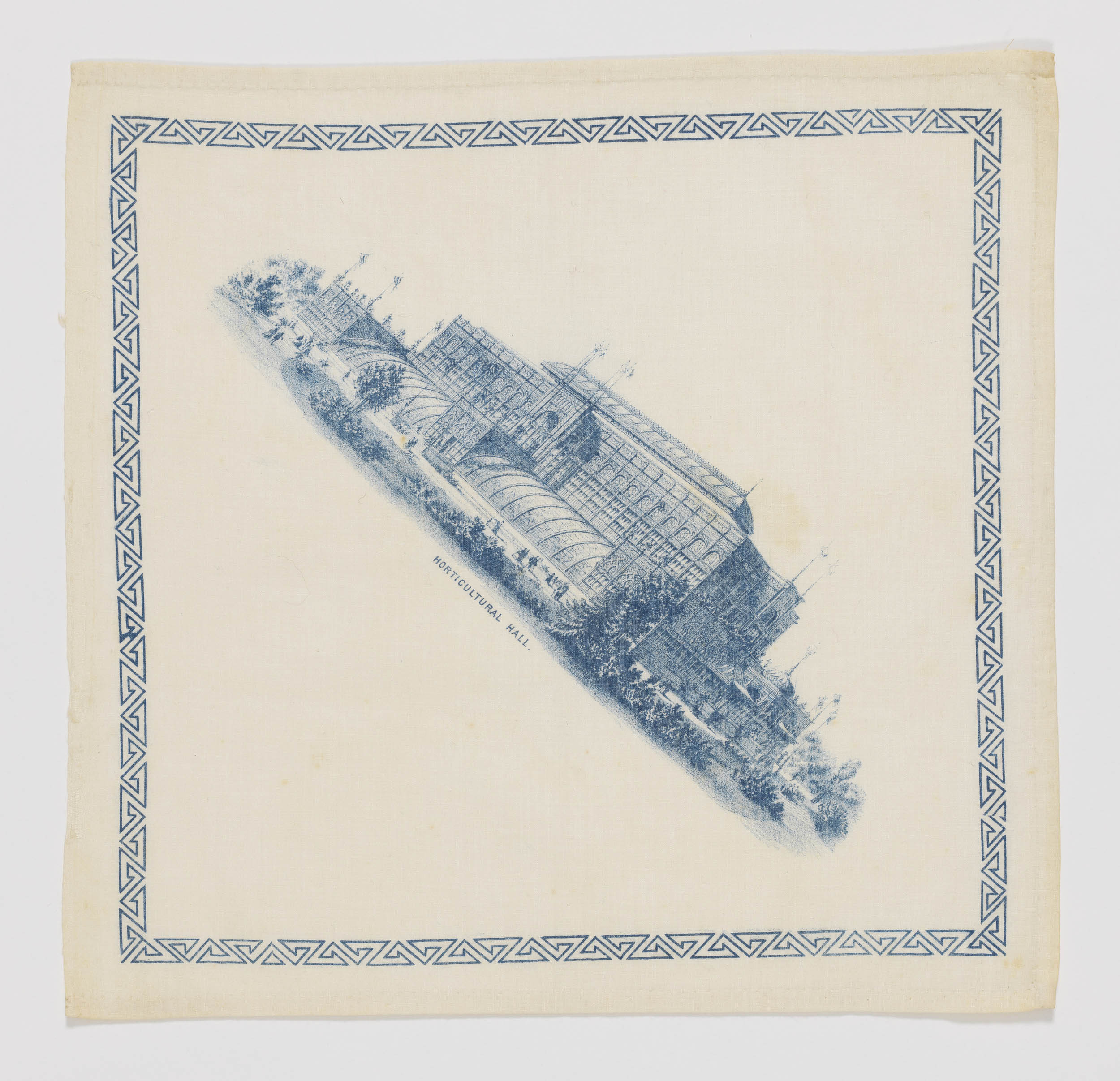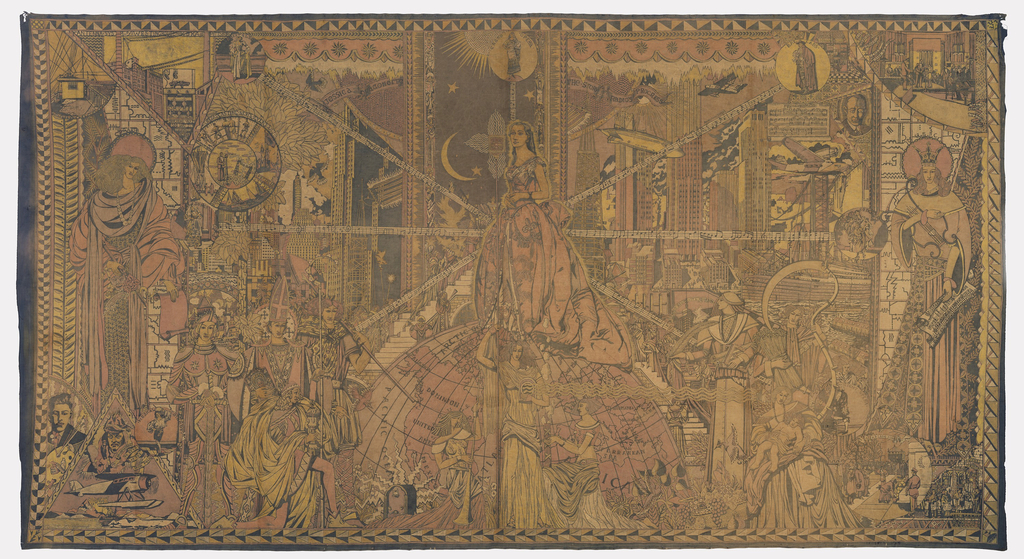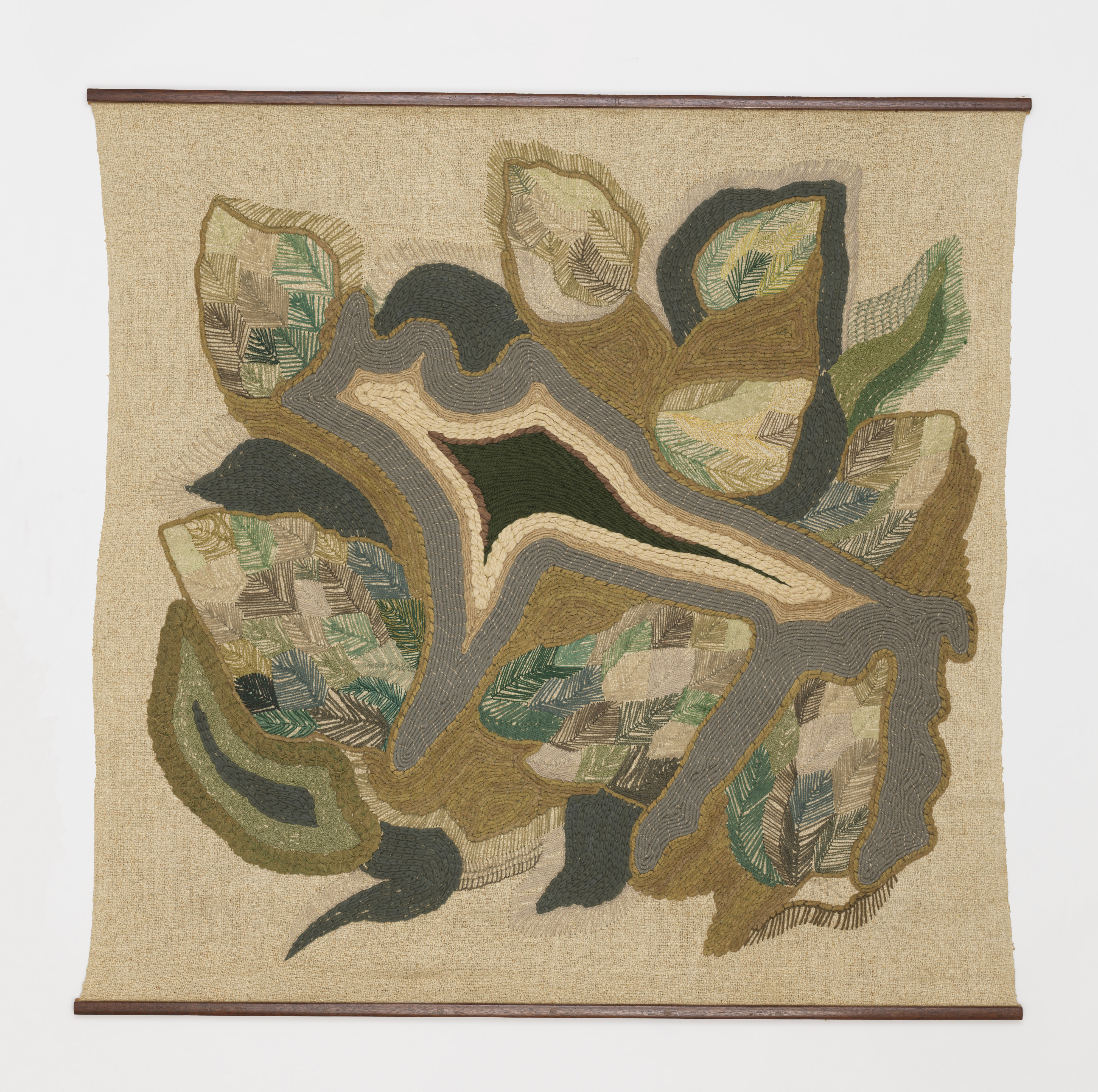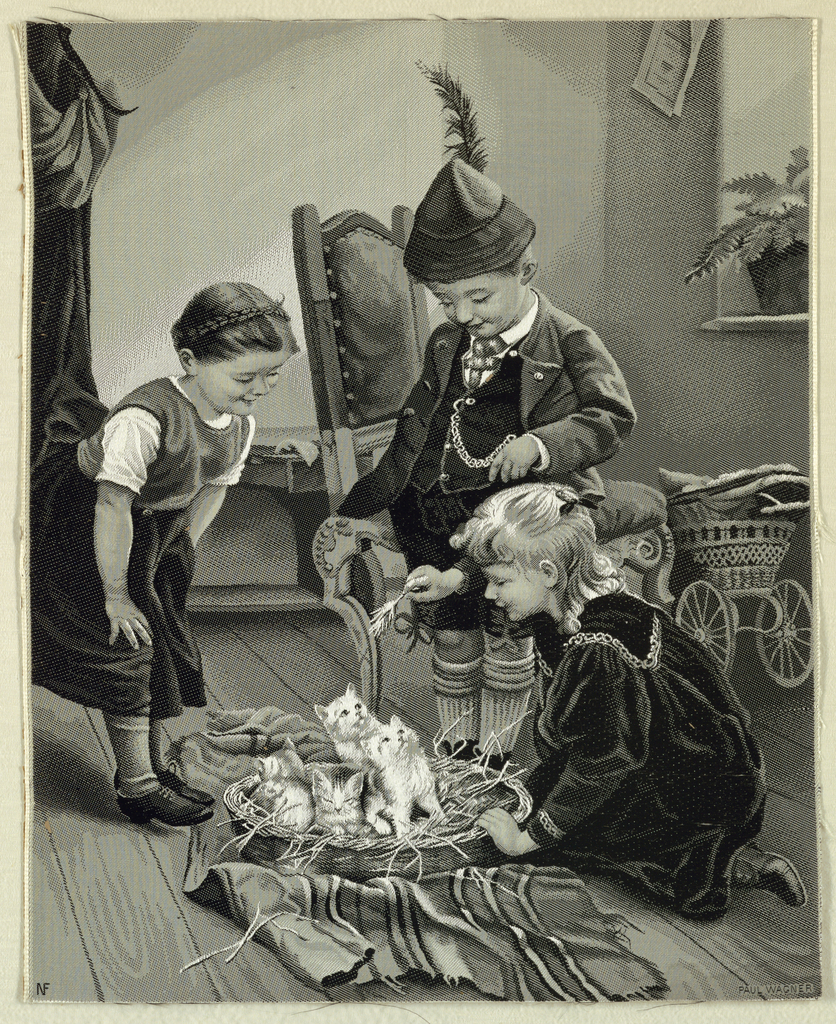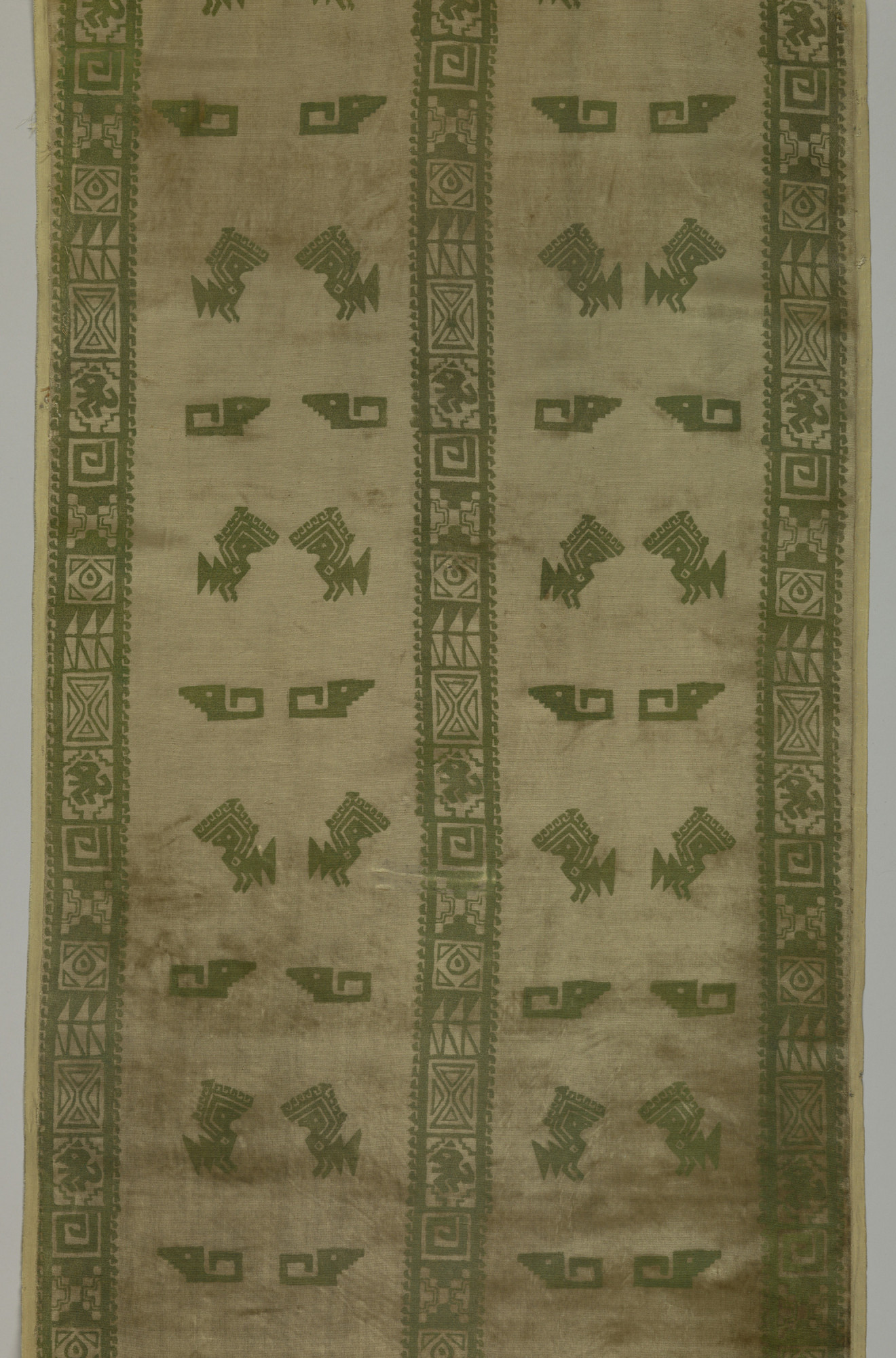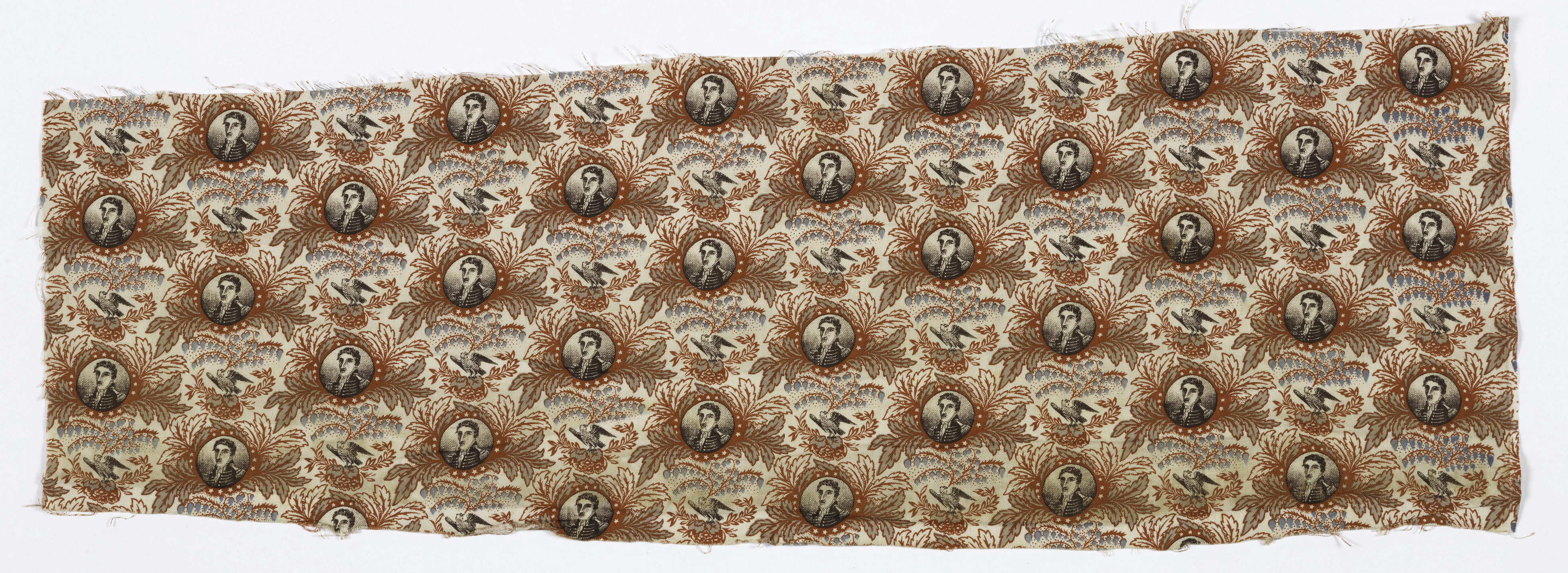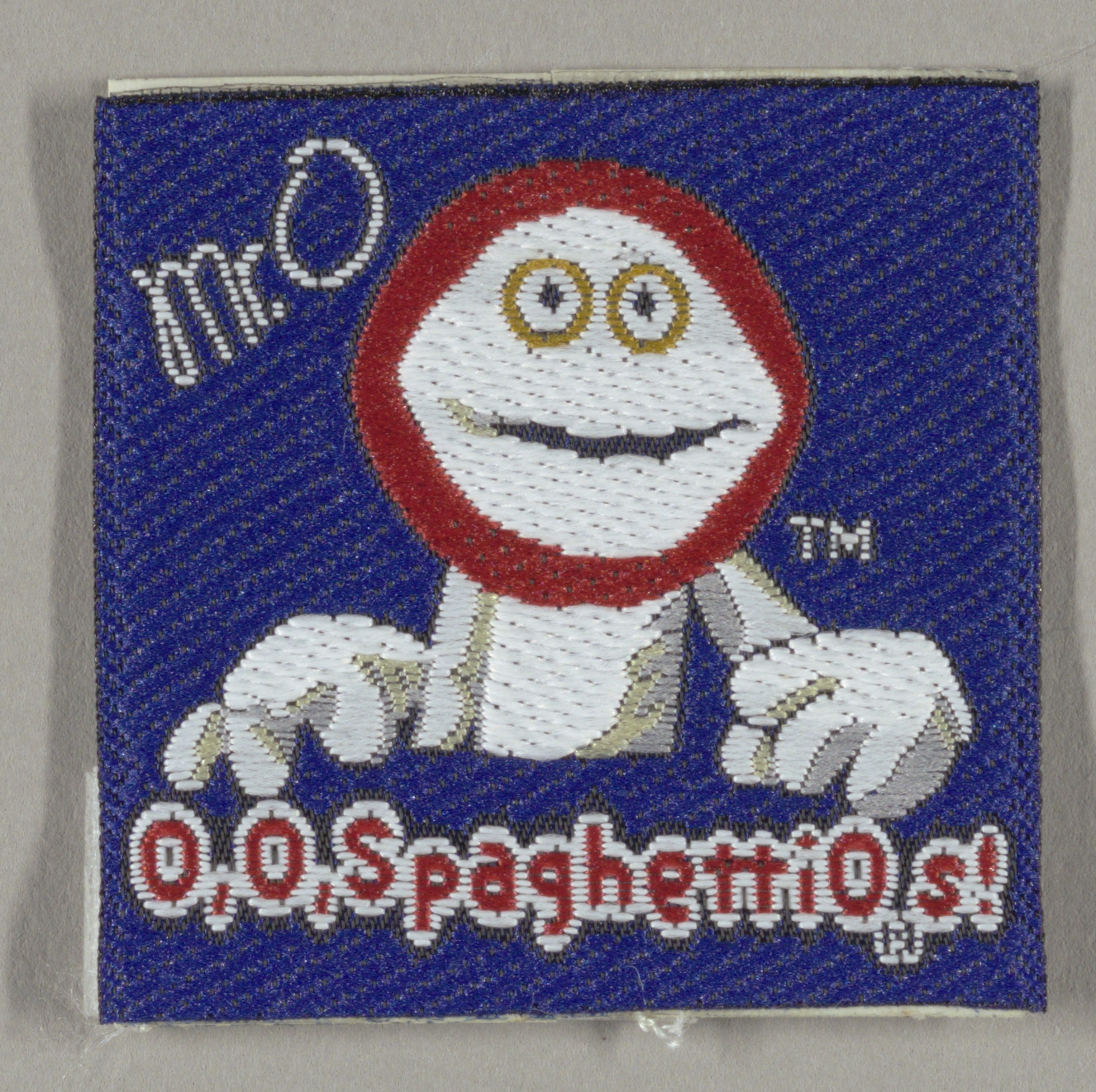The short-lived Dewey Arch lives on in this commemorative textile by Hamilton Print Works. The triumphal arch was erected in Madison Square in Manhattan and stood from 1899 to 1900. Inspired by the Arch of Titus in Rome, it was built for the parade honoring Admiral George Dewey (American, 1837–1917) for his 1898 victory in...
This souvenir handkerchief of Horticultural Hall at the 1876 Centennial Exposition in Philadelphia is unusual for its diagonal placement of the building in the center of the square. In the collection at the New York Historical Society there is a printed textile with six uncut handkerchiefs – there are views of the Art Gallery, Horticultural...
A 1933 monumental textile mural celebrates one of radio's first superstars and the early milestones of radio broadcast history.
The embroidered hanging, Fields from the Air, by artist and designer Mariska Karasz (American, b. Hungary, 1898–1960) is an exploration in abstraction. Karasz used tightly couched thick yarns to depict the swirling colors of the earth as seen from a great distance. She offset these heavy curvilinear forms with clusters of leaf and feather shapes...
Acquired in 1896, this fragment of red damask reportedly was removed from a chair following Emperor Maximilian’s brief reign of Mexico, which ended with his execution in Querétaro in 1867. When Napoleon III of France invaded Mexico in 1862, he intended to install a government friendly to French interests and subsequently invited the young Austrian...
Neyret Freres, a French company that operates today, once specialized in the manufacture of woven silk pictures, official state ribbons and trademarked woven items for clothing manufacturers. The company, founded by M. Antoine Bizaillon, started as a small ribbon factory in 1825 in St. Etienne, France. He later sold the company to his nephew, Jean-Baptiste...
In 1972 Cooper Hewitt received a bequest of textiles from New York City architect and artist Julian Clarence Levi (American, 1874-1971). It mainly was comprised of French and Indonesian textiles, but also included two unusual velvet panels printed with pre-Columbian bird motifs and other forms. The design itself is rather simple and contains two vertical...
This printed fragment by American Print Works of Fall River, Massachusetts has offset rows of small portrait medallions that contain the image of South American liberator Simón Bolívar (Venezuelan, 1783–1830). This fabric likely was produced for Philadelphia’s Centennial Exposition of 1876, which celebrated the one hundredth anniversary of the signing of the Declaration of Independence....
In 1985, Cooper Hewitt received a gift of seventy-eight woven labels from ASL Industries of Great Neck, New York. The company specialized in the manufacture of woven labels for clothing, luggage, toys, and shoes. The majority of the gift included labels for major retailers and garment manufacturers like Gap and London Fog, but a few...
